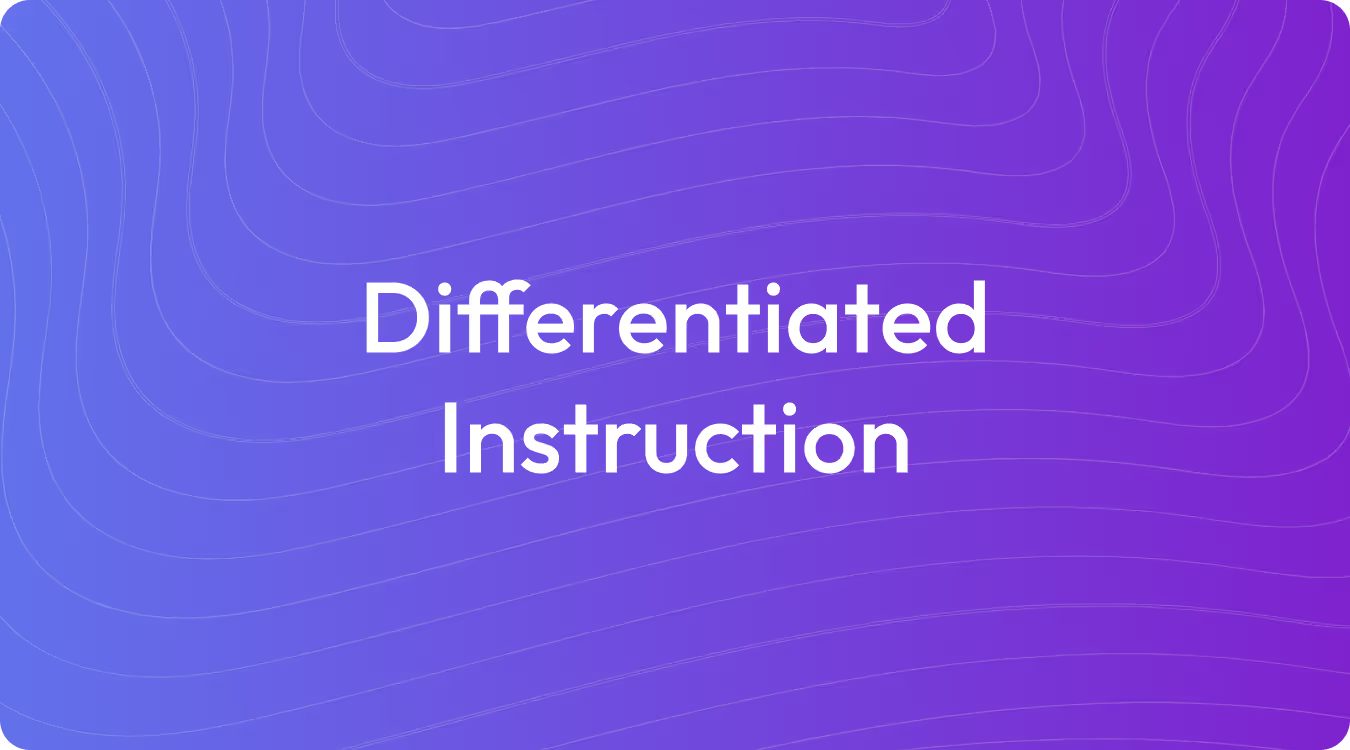What Is Design Mindset in Education?
-min.png)
What Is Design Mindset in Education?
A design mindset is an approach to problem-solving that puts people first. It's a way of thinking that begins with understanding the needs of your students through empathy. This process encourages creatively developing and testing solutions, viewing any missteps as valuable learning opportunities. It is a human-centered method focused on finding solutions and building the confidence to try new ideas.
.png)
Design Mindset Strategies and Activities
Integrating a design mindset into your lessons helps students develop a structured approach to problem-solving. They learn to start with empathy, work through uncertainty, test their ideas, and make improvements based on what they find. This process introduces a flexible way of thinking that can be applied to the core content you teach.
The strategies guide students to first understand user needs before developing solutions. They learn to spot a relevant challenge, build quick prototypes to learn from, and then refine their ideas using feedback. This approach also includes collaborative teamwork to build on shared thinking.
Here are some strategies and activities for a design mindset:
- Bug Lists: Students identify and list everyday problems or annoyances to shift their thinking from complaining to problem-solving.
- Fairy Tale Problem-Solving: Use familiar stories to help students practice empathy by identifying a character's problem and designing a solution for them.
- Core Values Reflection: Students reflect on their core values to ground their problem-solving work in what is personally meaningful.
- Empathy Mapping: Use empathy maps to explore what a user thinks, feels, says, and does regarding a specific issue or problem.
- 'How Might We' Statements: Frame challenges as questions starting with "How Might We..." to open up possibilities for solutions.
- Quick Prototyping: Build small, simple versions of an idea to test concepts and gather feedback early in the process.
- Peer Interviews: Students interview a partner about their needs related to a common object and then design an improved version for them.
- Co-planning with Students: Involve students in the design of their learning experiences, making them active participants in the process.
- Community Partnerships: Collaborate with local organizations to connect classroom learning to authentic, real-world challenges.
- Feedback and Iteration: Establish a process for students to gather feedback on their prototypes and use it to make specific improvements.
Design Mindset Benefits
A design mindset helps students approach problems with a structured, human-centered process. By embedding these mindsets into your lessons, you guide students to start with empathy, identify relevant challenges, and build to learn. This approach teaches a flexible thinking process that can strengthen their understanding of core content.
Adopting a design mindset can equip students with skills like empathy, collaboration, and resilience for solving complex problems. However, the process requires careful guidance to be effective and can present challenges, as it involves a shift in mindset and an acceptance of failure as part of learning.
Here are some outcomes of using a design mindset in the classroom:
- Empathy: Students learn to listen, observe, and understand the needs of others before creating solutions.
- Critical Thinking: Students are encouraged to question assumptions and analyze information from multiple sources.
- Collaborative Problem-Solving: The framework provides opportunities for students to work in teams and build on shared ideas.
- Resilience and Adaptability: The iterative process teaches students to persevere through setbacks and view change as a part of learning.
- Real-World Application: Students can tackle authentic challenges, which helps connect classroom activities to practical situations.
- Student Agency: The process can help students see that they have the ability to create change in their environment.
- Interdisciplinary Learning: Design thinking can be used across the curriculum, helping students see connections between subjects.
- Implementation Needs: The process requires proper guidance and training to be applied effectively in the classroom.
- Mindset Shift: It depends on both teachers and students adopting a growth mindset and viewing challenges as learning opportunities.
- Structured Creativity: Students are encouraged to generate a wide range of ideas within a structured problem-solving framework.
Design Mindset Examples
Design mindset activities can be found in various classroom settings, from elementary art classes to high school science labs. These projects often ask students to solve real-world problems, either for their community or by exploring topics like immigration and sustainability.
Implementing these activities can lead to higher student engagement and a greater sense of ownership over their learning. However, it also requires significant planning from teachers and involves a degree of uncertainty, as the outcomes are not always predictable.
Here are a few examples of how a design mindset can be applied in the classroom:
- School-Wide Design Challenge: All students and staff at a high school participated in a three-day event to tackle community problems, working in mixed-grade groups to develop and present solutions.
- Sustainable City Planning: Students use math for population projections, science for sustainable energy, and social studies for governance models to design a city for future generations.
- Interactive Sculptures: Fifth graders in a digital art class were challenged to build interactive sculptures with moving parts, working in teams with time and material constraints.
- Real-World Science Problems: Science students develop their own driving questions and design lab experiments to address issues like composting or global health challenges.
- Community Climate Research: Students and educators collaborate with community partners on climate resilience research, collecting data and presenting findings at civic action conferences.
Design Mindset Best Practices
Embedding key design mindsets into your lessons helps students think like designers. This approach guides them to approach problems with empathy, test ideas, and iterate toward solutions. Students learn to understand needs before jumping to solutions and use feedback to refine their work.
Implementing these practices involves integrating them into your core curriculum rather than treating them as isolated activities. It requires creating a classroom culture that values experimentation, feedback, and collaboration. This helps connect learning to authentic challenges.
Here are some design mindset best practices:
- Start with Empathy: Encourage students to engage with their community or target audience to understand needs and challenges through methods like interviews or observations.
- Encourage Collaboration: Facilitate group work where students can share ideas and build on one another’s strengths, as design thinking benefits from diverse perspectives.
- Use Real-World Problems: Connect projects to authentic challenges to make the learning experience more relevant and increase student investment in their work.
- Integrate Iterative Feedback: Build in regular feedback loops throughout the process to help students refine their ideas and understand the importance of constructive criticism.
- Create a Safe Space for Failure: Emphasize that failure is a part of the learning process and view setbacks as opportunities for growth, which fosters resilience.
Teach with TeachShare
Adopting a design mindset is a great choice for creating meaningful learning experiences, as it centers on empathy and creative problem-solving. Our platform supports this teaching practice with Boosts, which let you add research-backed strategies like inquiry and scaffolding to any resource in a single click. This helps you purposefully differentiate instruction and deepen student thinking. Start creating resources with TeachShare now.
Frequently Asked Questions
Answer







-min.png)